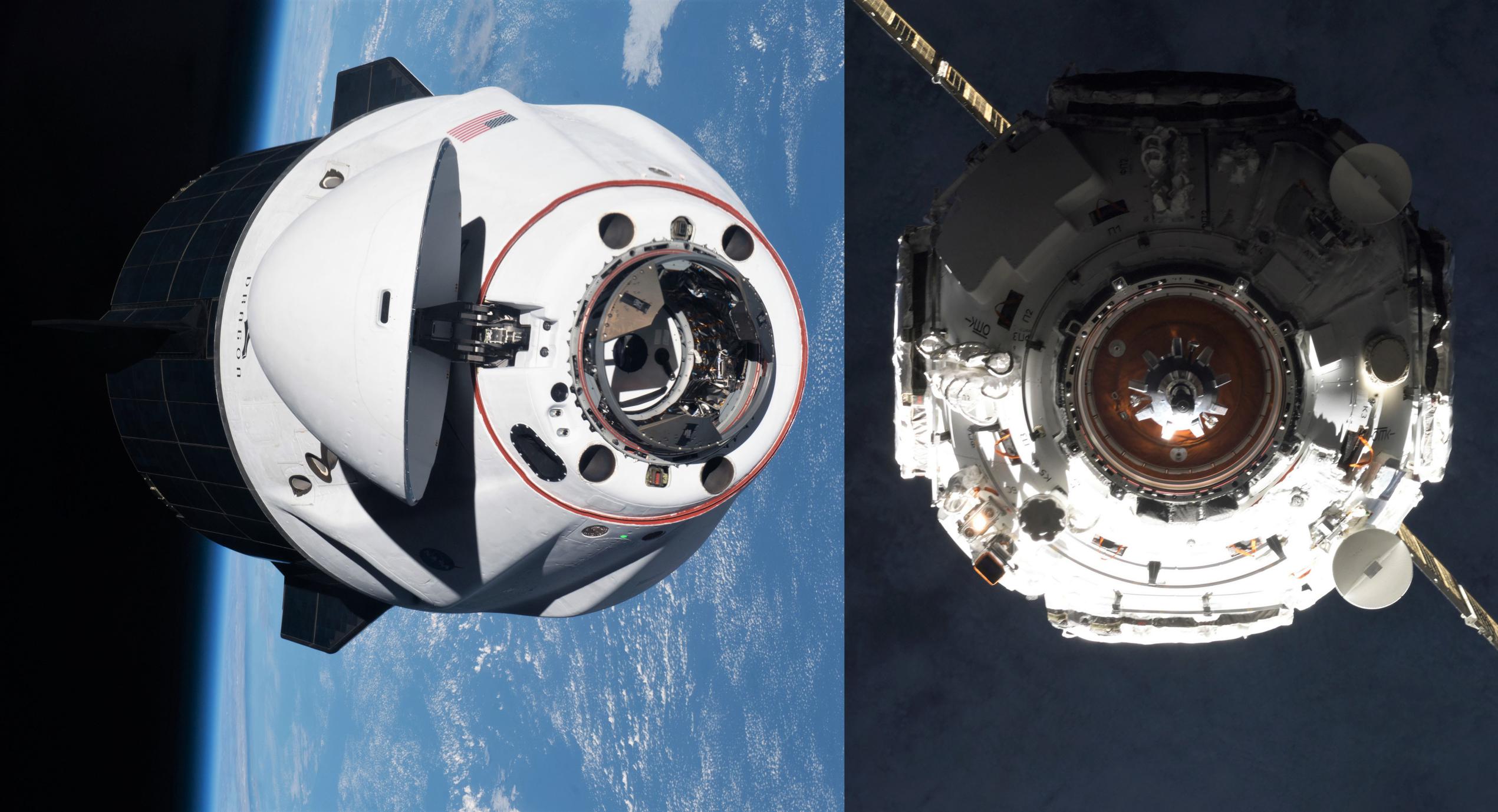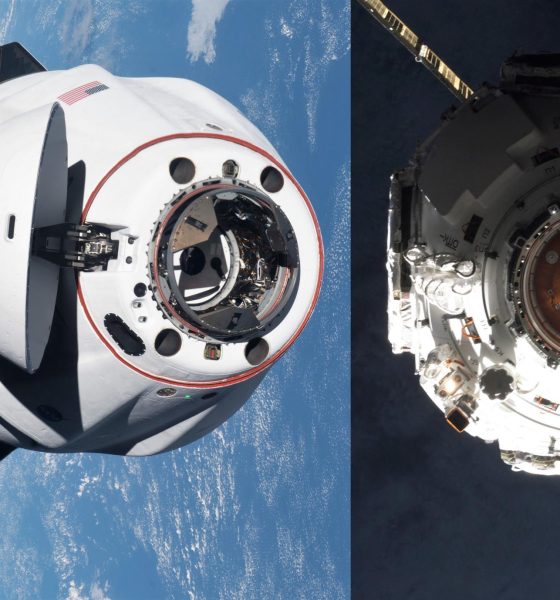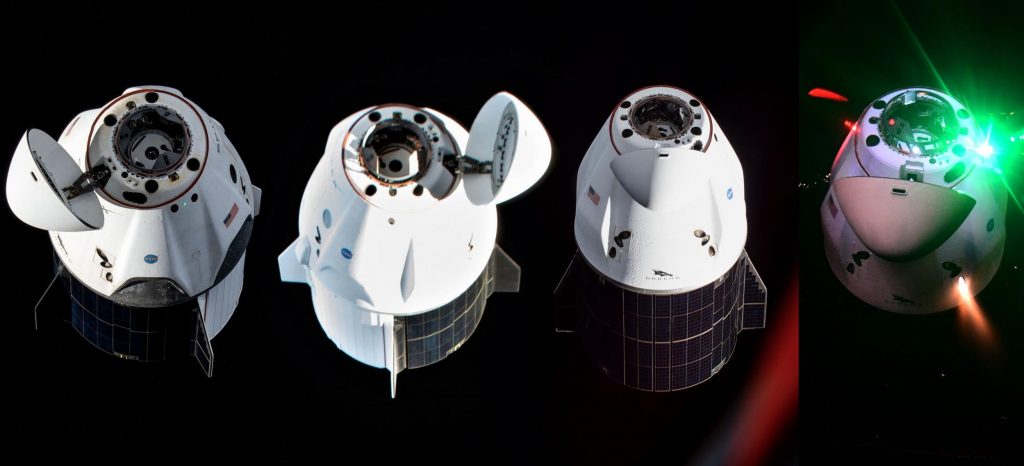

News
NASA wants SpaceX to dock Dragons at new Russian space station ‘node’
State media agency RIA says that NASA and Roscosmos are negotiating an agreement that would eventually allow SpaceX Dragon spacecraft and other future visiting vehicles to dock to a new Russian ‘node’ module recently installed on the International Space Station (ISS).
Prichal – Russian for “pier” – was successfully launched into orbit on a Soyuz 2.1 rocket on November 24th. A tug derived from the space agency’s uncrewed Progress resupply ship delivered the decade-old module to the ISS two days later, culminating in a successful docking on November 26th. Weighing almost four tons (3890kg/8600lb), Prichal is a 3.3m (~11ft) wide spherical pressure vessel whose sole purpose is to receive visiting cargo and crew vehicles and (in theory) enable further expansion of the space station’s Russian segment.
It remains to be seen if Roscosmos will be able to complete and launch any of several new planned space station modules in time for doing so to still make sense. Aside from a significant amount of uncertainty as to whether Russia will actually continue to support its ISS segment beyond 2030, Roscosmos has had a nightmarish time preparing the last two “new” segments – Prichal and Nauka. Nauka, a habitation and laboratory module, was originally planned to launch in 2007. Only fourteen years later – in July 2021 – did Roscosmos finally manage to finish and launch the module, which then proceeded to perform a long, uncommanded thruster firing that could have easily damaged or destroyed the entire station on the same day it arrived.
Meanwhile, work on Prichal began in 2007 and the module was initially expected to launch in 2013. Concerted development began in 2010 and construction was completed by 2014. Planned to be an extension of Nauka, Prichal was subsequently forced to spend almost seven years in storage before it was finally brought out of the closet and launched in November 2021.
Now, while odds are firmly against Prichal ever supporting another Russian ISS module, the ‘node’ still has plenty of potential operating solely as a docking hub or (per its namesake) a pier. Outfitted with six docking ports, one of which now connects it to Nauka and the rest of the ISS, the other five ports are effectively free to be used by any arriving Russian spacecraft – including Progress cargo ships, Soyuz crew vehicles, and next-generation Orel (Eagle) spacecraft. However, according to Roscosmos and state media outlet RIA, SpaceX’s Crew and Cargo Dragons and other US spacecraft set to use the western International Docking Adapter (IDA) standard could be added to the list of possible tenants.
To allow a spacecraft fitted with IDA to dock to one of Prichal’s four radial “ASP-GB” ports, some kind of adapter would first need to be designed, constructed, launched, and installed. The specifics of that work are likely what’s being “negotiated” – namely how Roscosmos will be compensated for building its portion of that hypothetical adapter. NASA would likely procure and provide a new IDA port, while Russia would build the ASP-GB connection. As is common for the ISS program, compensation would likely come in the form of services rendered rather than a direct payment, with NASA perhaps launching an extra Russian cosmonaut or providing a larger portion of supplies for a set period.


If realized, the addition of a third IDA port at the International Space Station would make life significantly easier for NASA. Even now, with just two spacecraft (Crew and Cargo Dragon) to worry about, NASA is forced to very carefully schedule arrivals and departures and has already had to have SpaceX perform multiple Crew Dragon port relocation maneuvers to prepare for the arrival of other Dragons. In the near future, Boeing’s Starliner spacecraft and semi-annual private Crew Dragon missions to the ISS will also enter the fray, making the scheduling and sequencing of spacecraft arrivals and departures even more challenging.
The US ISS segment really only has two ports still available for conversion to the IDA standard and both are needed to ensure safe, redundant cargo deliveries from uncrewed Cygnus and (as early as next year) Dreamchaser spacecraft throughout the 2020s. Ultimately, that means that an agreement to place a third IDA on the Russian segment is the only clear way NASA can give itself breathing room for the next decade of IDA spacecraft operations.

News
Elon Musk’s Grokipedia surges to 5.6M articles, almost 79% of English Wikipedia
The explosive growth marks a major milestone for the AI-powered online encyclopedia, which was launched by Elon Musk’s xAI just months ago.

Elon Musk’s Grokipedia has grown to an impressive 5,615,201 articles as of today, closing in on 79% of the English Wikipedia’s current total of 7,119,376 articles.
The explosive growth marks a major milestone for the AI-powered online encyclopedia, which was launched by Elon Musk’s xAI just months ago. Needless to say, it would only be a matter of time before Grokipedia exceeds English Wikipedia in sheer volume.
Grokipedia’s rapid growth
xAI’s vision for Grokipedia emphasizes neutrality, while Grok’s reasoning capabilities allow for fast drafting and fact-checking. When Elon Musk announced the initiative in late September 2025, he noted that Grokipedia would be an improvement to Wikipedia because it would be designed to avoid bias.
At the time, Musk noted that Grokipedia “is a necessary step towards the xAI goal of understanding the Universe.”
Grokipedia was launched in late October, and while xAI was careful to list it only as Version 0.1 at the time, the online encyclopedia immediately earned praise. Wikipedia co-founder Larry Sanger highlighted the project’s innovative approach, noting how it leverages AI to fill knowledge gaps and enable rapid updates. Netizens also observed how Grokipedia tends to present articles in a more objective manner compared to Wikipedia, which is edited by humans.
Elon Musk’s ambitious plans
With 5,615,201 total articles, Grokipedia has now grown to almost 79% of English Wikipedia’s article base. This is incredibly quick, though Grokipedia remains text-only for now. xAI, for its part, has now updated the online encyclopedia’s iteration to v0.2.
Elon Musk has shared bold ideas for Grokipedia, including sending a record of the entire knowledge base to space as part of xAI’s mission to preserve and expand human understanding. At some point, Musk stated that Grokipedia will be renamed to Encyclopedia Galactica, and it will be sent to the cosmos.
“When Grokipedia is good enough (long way to go), we will change the name to Encyclopedia Galactica. It will be an open source distillation of all knowledge, including audio, images and video. Join xAI to help build the sci-fi version of the Library of Alexandria!” Musk wrote, adding in a later post that “Copies will be etched in stone and sent to the Moon, Mars and beyond. This time, it will not be lost.”
News
Tesla Model 3 becomes Netherlands’ best-selling used EV in 2025
More than one in ten second-hand electric cars sold in the country last year was a Tesla Model 3.

The Tesla Model 3 became the most popular used electric car in the Netherlands in 2025, cementing its dominance well beyond the country’s new-car market.
After years at the top of Dutch EV sales charts, the Model 3 now leads the country’s second-hand EV market by a wide margin, as record used-car purchases pushed electric vehicles further into the mainstream.
Model 3 takes a commanding lead
The Netherlands recorded more than 2.1 million used car sales last year, the highest level on record. Of those, roughly 4.8%, or about 102,000 vehicles, were electric. Within that growing segment, the Tesla Model 3 stood far ahead of its competitors.
In 2025 alone, 11,338 used Model 3s changed hands, giving the car an 11.1% share of the country’s entire used EV market. That means more than one in ten second-hand electric cars sold in the country last year was a Tesla Model 3, Auto Week Netherlands reported. The scale of its lead is striking: the gap between the Model 3 and the second-place finisher, the Volkswagen ID3, is more than 6,700 vehicles.
Rivals trail as residual values shape rankings
The Volkswagen ID.3 ranked a distant second, with 4,595 used units sold and a 4.5% market share. Close behind was the Audi e-tron, which placed third with 4,236 registrations. As noted by Auto Week Netherlands, relatively low residual values likely boosted the e-tron’s appeal in the used market, despite its higher original price.
Other strong performers included the Kia Niro, the Tesla Model Y, and the Hyundai Kona, highlighting continued demand for compact and midsize electric vehicles with proven range and reliability. No other model, however, came close to matching the Model 3’s scale or market presence.
News
Tesla Model Y Standard Long Range RWD launches in Europe
The update was announced by Tesla Europe & Middle East in a post on its official social media account on X.

Tesla has expanded the Model Y lineup in Europe with the introduction of the Standard Long Range RWD variant, which offers an impressive 657 km of WLTP range.
The update was announced by Tesla Europe & Middle East in a post on its official social media account on X.
Model Y Standard Long Range RWD Details
Tesla Europe & Middle East highlighted some of the Model Y Standard Long Range RWD’s most notable specs, from its 657 km of WLTP range to its 2,118 liters of cargo volume. More importantly, Tesla also noted that the newly released variant only consumes 12.7 kWh per 100 km, making it the most efficient Model Y to date.
The Model Y Standard provides a lower entry point for consumers who wish to enter the Tesla ecosystem at the lowest possible price. While the Model 3 Standard is still more affordable, some consumers might prefer the Model Y Standard due to its larger size and crossover form factor. The fact that the Model Y Standard is equipped with Tesla’s AI4 computer also makes it ready for FSD’s eventual rollout to the region.
Top Gear’s Model Y Standard review
Top Gear‘s recent review of the Tesla Model Y Standard highlighted some of the vehicle’s most notable features, such as its impressive real-world range, stellar infotainment system, and spacious interior. As per the publication, the Model Y Standard still retains a lot of what makes Tesla’s vehicles well-rounded, even if it’s been equipped with a simplified interior.
Top Gear compared the Model Y Standard to its rivals in the same segment. “The introduction of the Standard trim brings the Model Y in line with the entry price of most of its closest competition. In fact, it’s actually cheaper than a Peugeot e-3008 and costs £5k less than an entry-level Audi Q4 e-tron. It also makes the Ford Mustang Mach-E look a little short with its higher entry price and worse range,” the publication wrote.








